









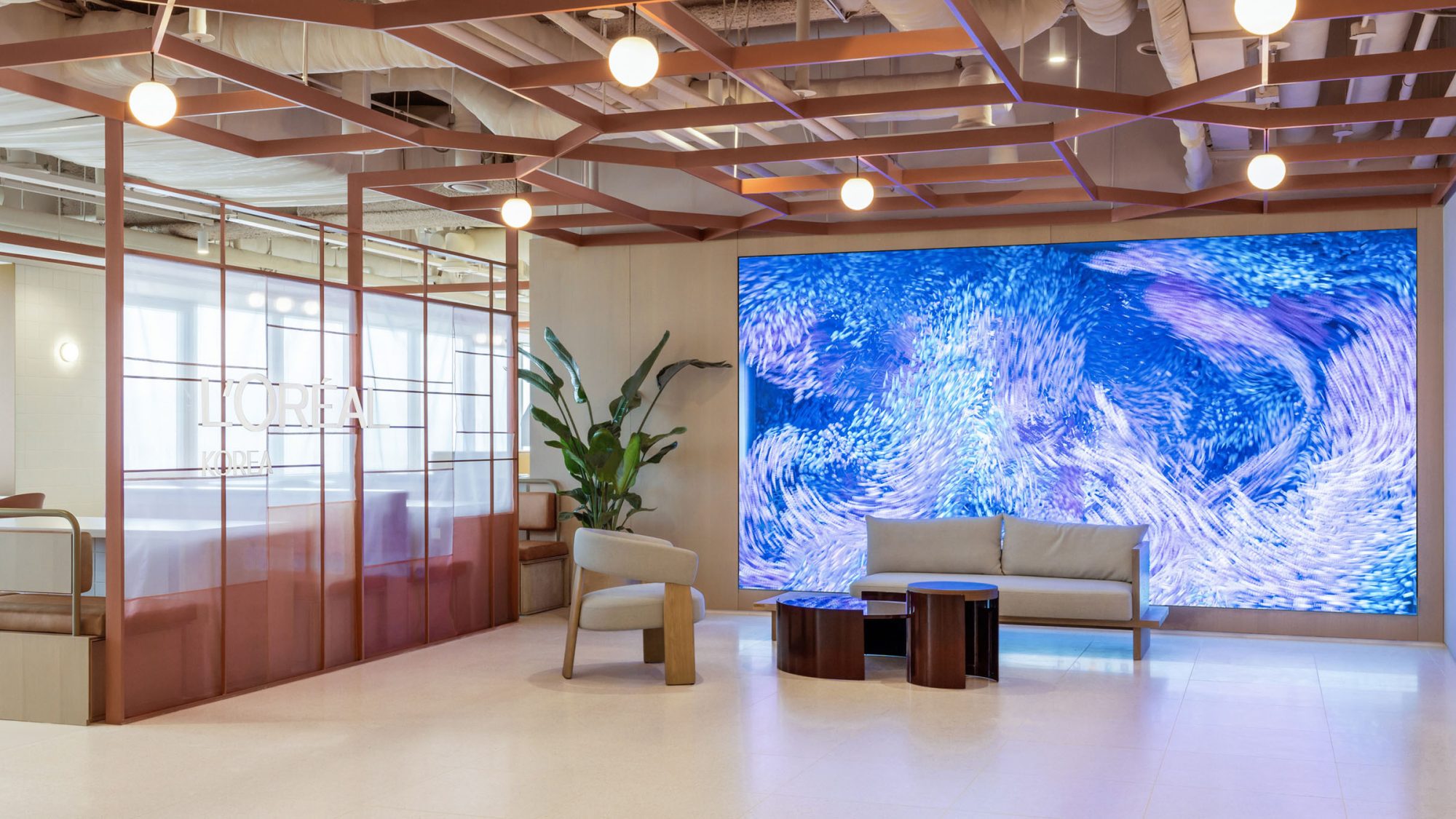 L'Oreal, Seoul
L'Oreal, Seoul Neuroaesthetics is a growing field exploring how the brain processes art and beauty. It’s a part of neurodesign, which combines principles from neuroscience, psychology and biology to understand and influence how we respond to creative stimuli.
Businesses are focused on enhancing the workplace experience – from encouraging employees to return to the office to prioritising wellness, inclusivity and neurodiversity. Consequently, there has been a surge of interest in neuroaesthetic studies, underscoring the deep links between design and the principles of psychology. This research, in turn, provides transformative potential for individuals and their organisations.
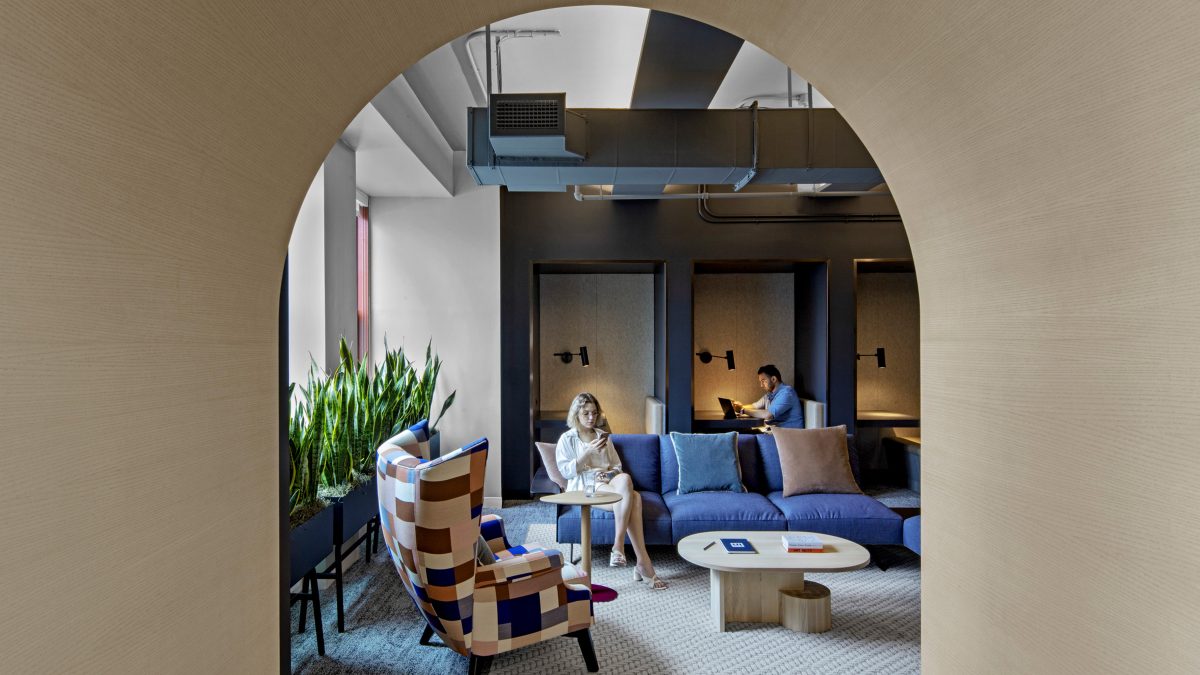
The concept of sensory design explores how our senses, such as touch, sight, and smell, interact with our environment. By creating multi-sensory experiences in workplaces, we can amplify the positive impact on the people spending time there—even if it’s just during a break away from the desk.
In ‘The Shaping of Us’, Lily Bernheimer highlights how spending time in natural environments encourages us to be more generous, empathetic and helpful. She emphasises how the nature of our everyday spaces has great power to encourage pro-social interaction and positive emotions.
Scents and sounds can also support individual wellbeing. This might include layering in calming scents and soundscapes in a library or lounge to bring a sense of calmness and relaxation. Or introducing circadian lighting to mimic the natural rhythm of sunlight. Incorporating tactile finishes into a design enhances aesthetics and creates a deeper connection with our environment. Inviting people to touch and interact with these tactile elements stimulates sensory experiences that further enrich their interaction with a space.
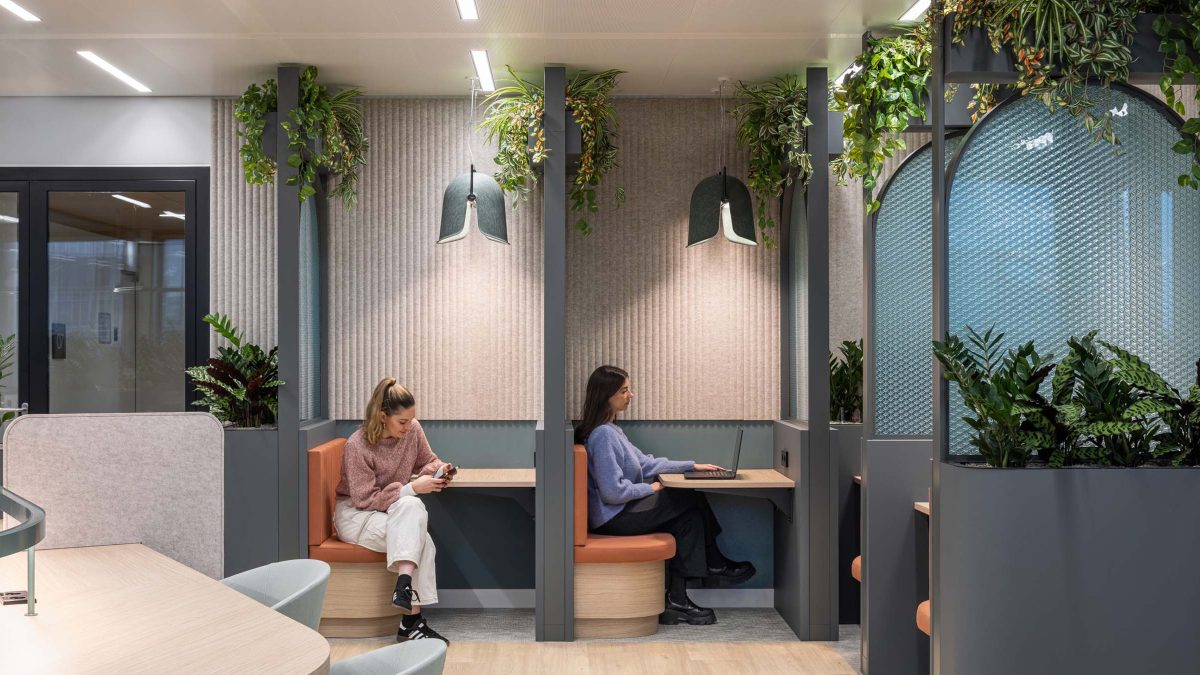
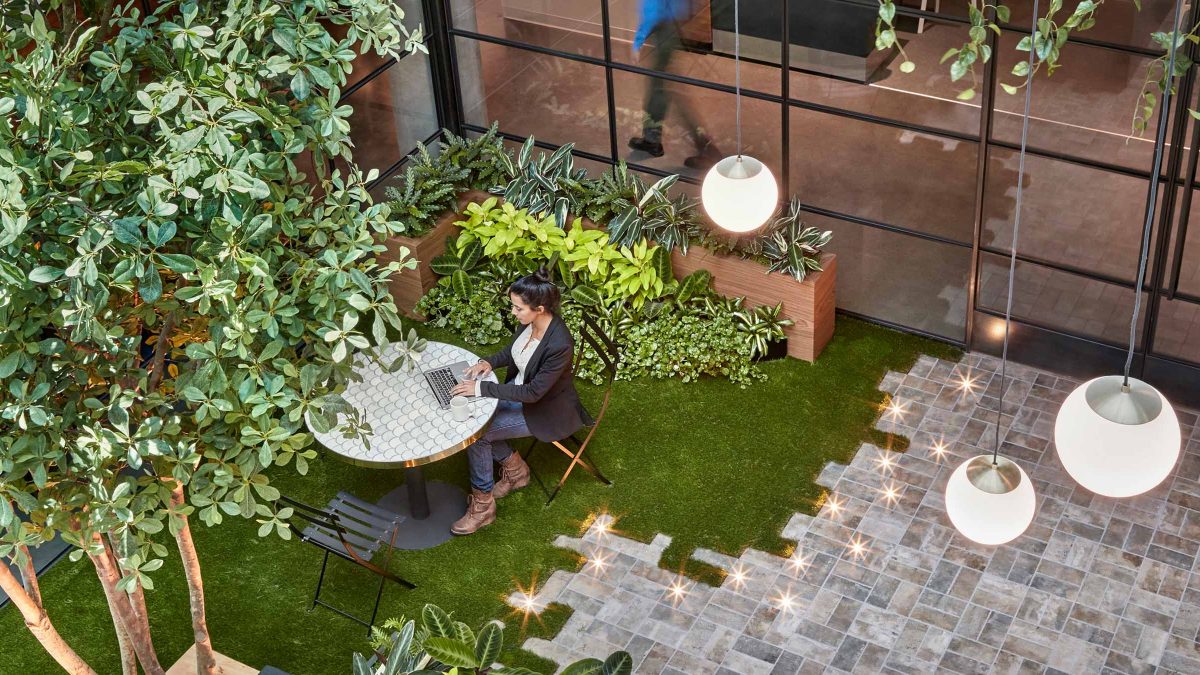
The influence of colour on cognitive performance is well-documented. Colour’s potency lies in its ability to evoke emotions, foster creativity and shape behaviours. Different colours can trigger distinct psychological and physiological responses in humans. By comprehensively understanding these effects and strategically implementing them in the workplace, we can craft spaces that elicit specific experiences, support neurodiversity and improve mood and productivity.
Blue has been proven to promote concentration and mental clarity, so incorporating it into spaces where teams must focus can be highly beneficial. This might include meeting rooms, heads-down work areas and even collaboration zones.
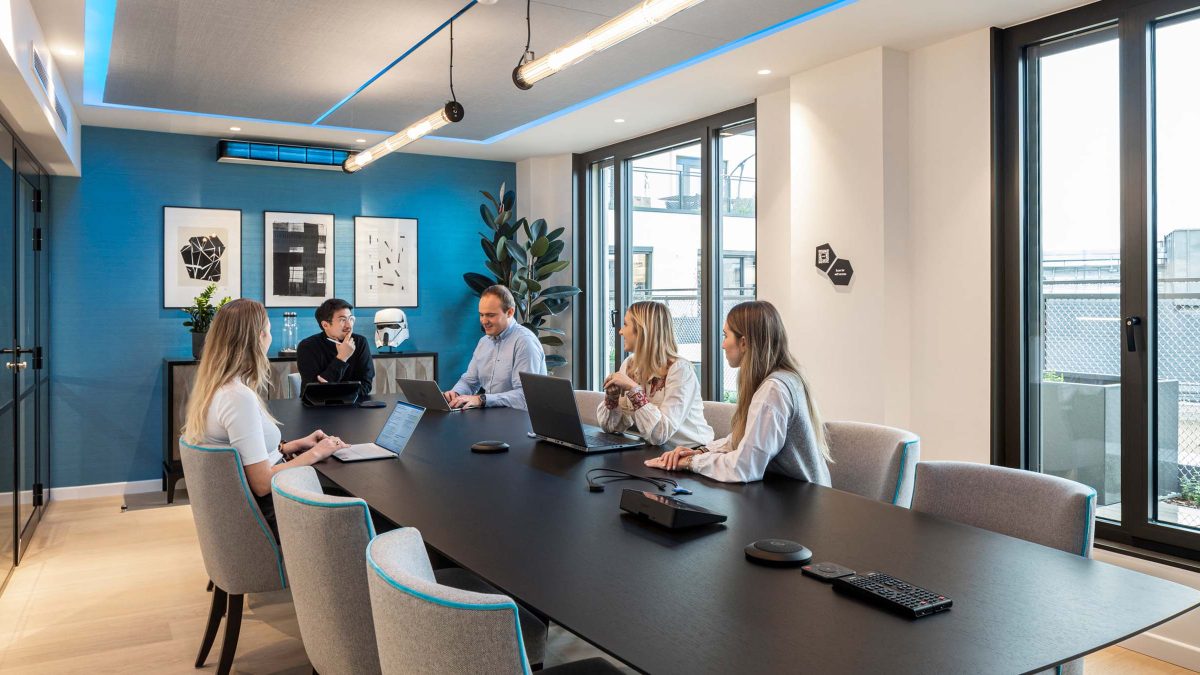
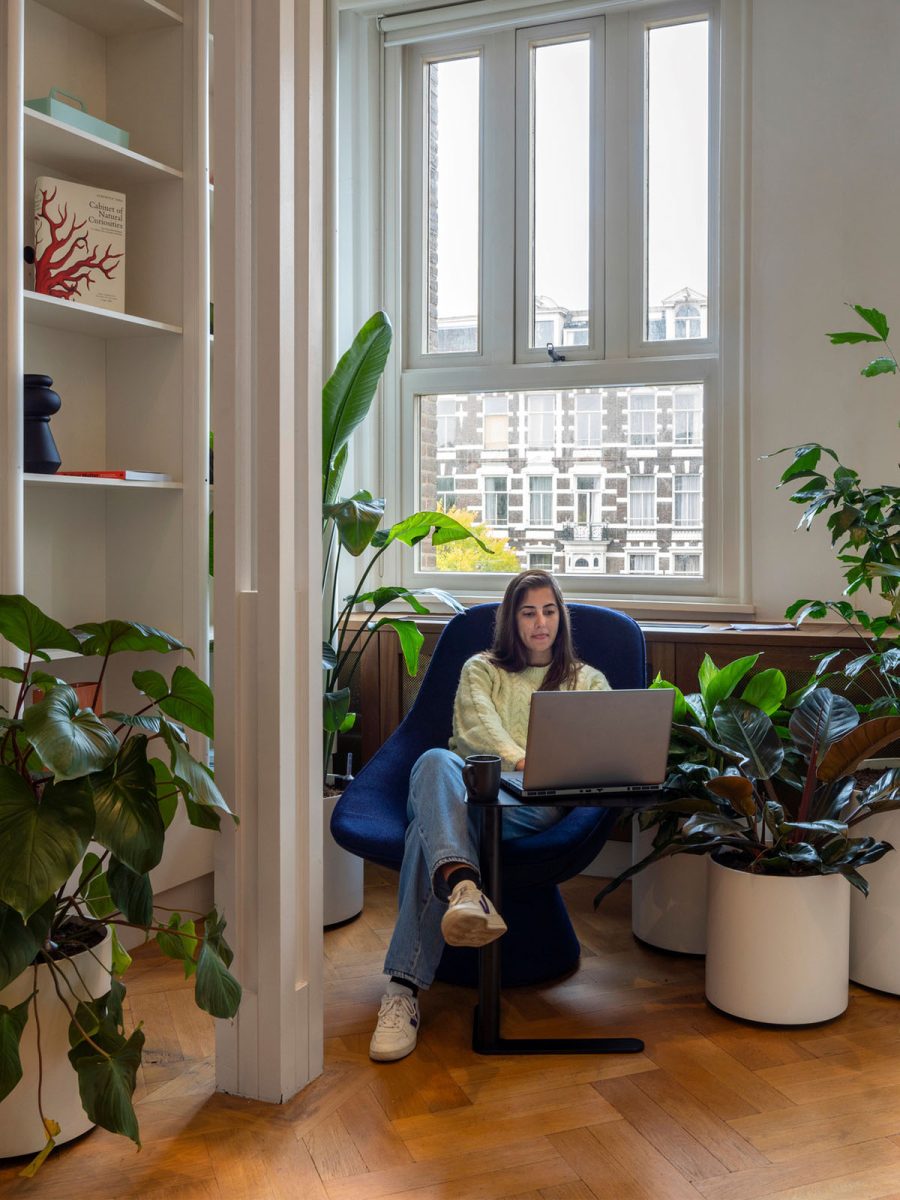
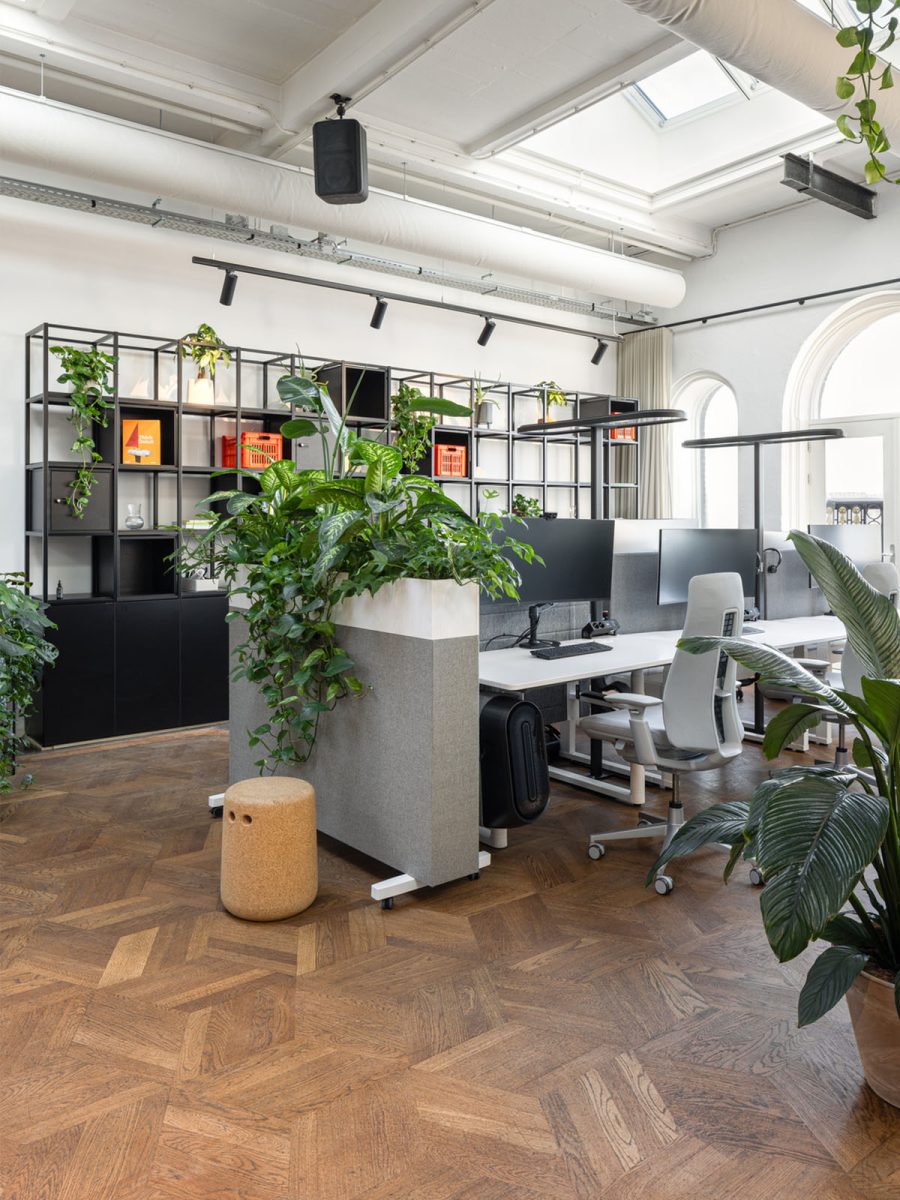
On the other hand, green is particularly effective in areas where employees are anticipated to spend long hours working. This is because green has a calming effect, reducing anxiety and eye strain. Incorporating green (from biophilia to desk dividers) near work points, within informal lounge settings, or dedicated wellness spaces can help support sustained productivity for extended periods.
Bright pops of colour, like orange, can be strategically employed to foster creativity and innovative thinking. However, it’s essential to use these accents sparingly and with careful consideration to prevent them from overpowering the environment and the people within it. Employing them in a controlled manner brings maximum impact while maintaining harmony within the overall design scheme.

Another example is red, which has been shown to increase blood pressure and heart rate and, therefore, appetite. That’s why so many fast-food chains use it in their spaces.
Our designers also carefully consider the context, culture, impact and effects of neuroaesthetics.
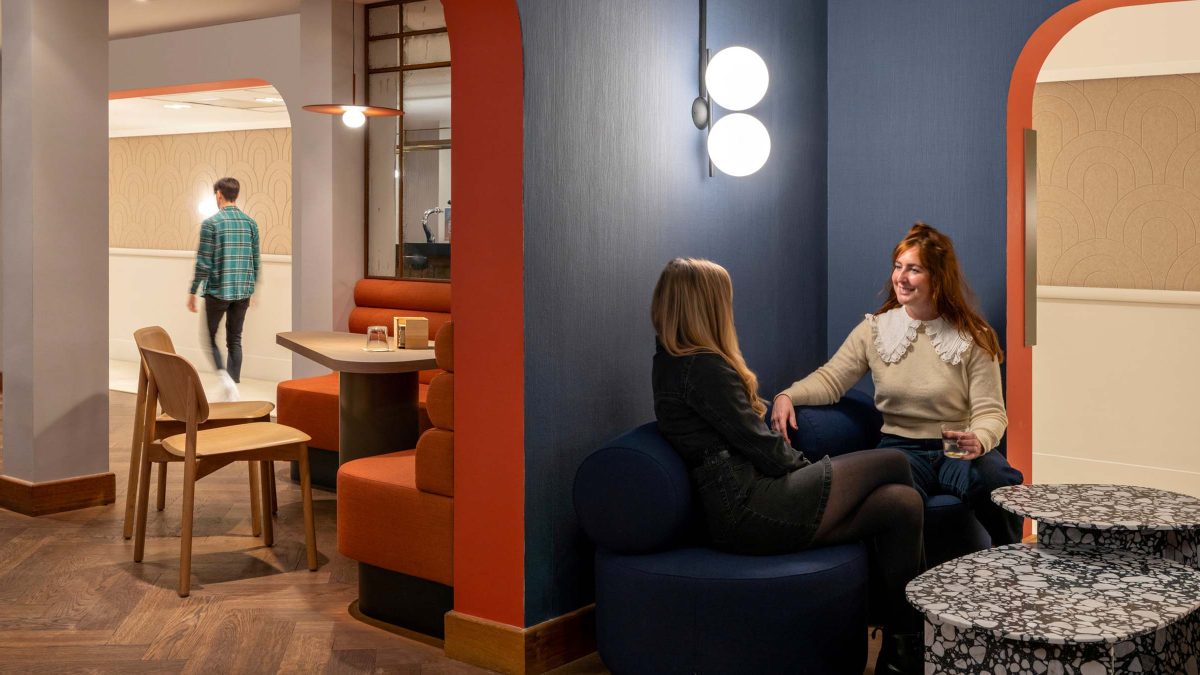
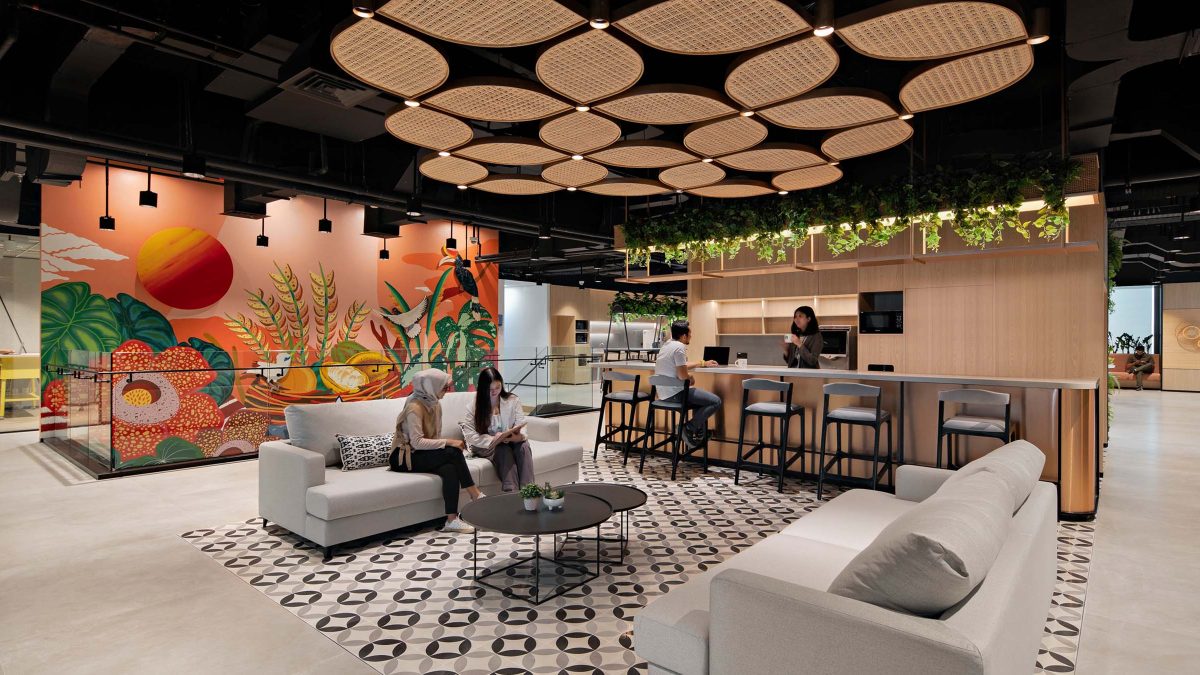
Supported by decades of ‘Environmental Psychology’, research consistently showcases the stress-reducing benefits associated with exposure to nature. Integrating biophilic elements into interior design, such as natural materials and views of greenery, can significantly lower stress levels, enhancing cognitive function and uplifting mood. Natural finishes such as cork, timber or earthy tones create an instinctive sense of calm. Biomimicry, which looks to nature and natural systems for inspiration, uses nature-inspired strategies for improving design. This doesn’t necessarily have to be physical nature but can reflect natural patterns for a similar calming effect.
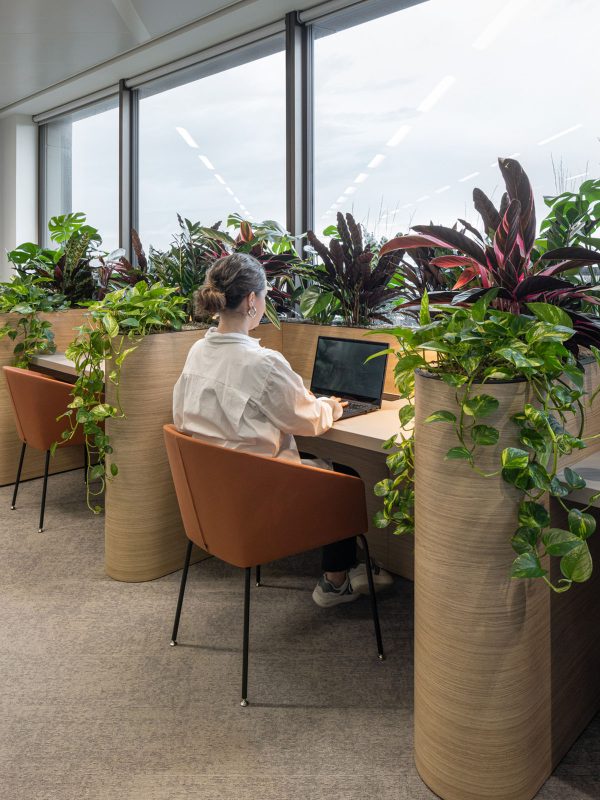 Pinsent Masons, Amsterdam
Pinsent Masons, Amsterdam 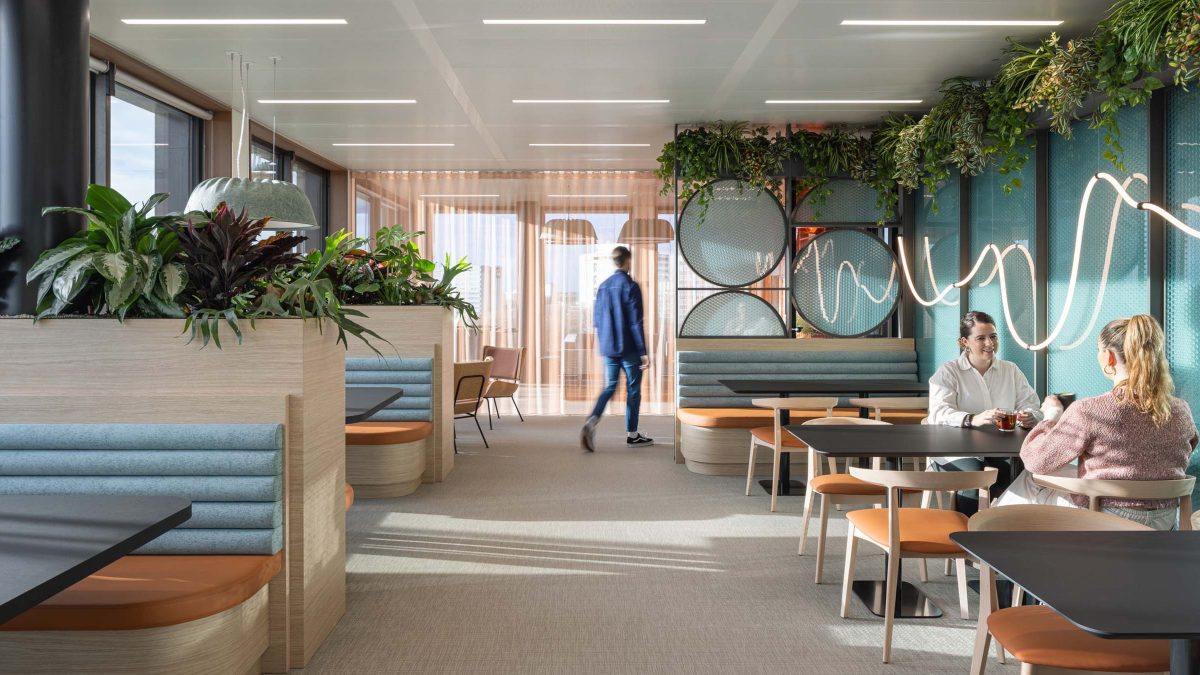
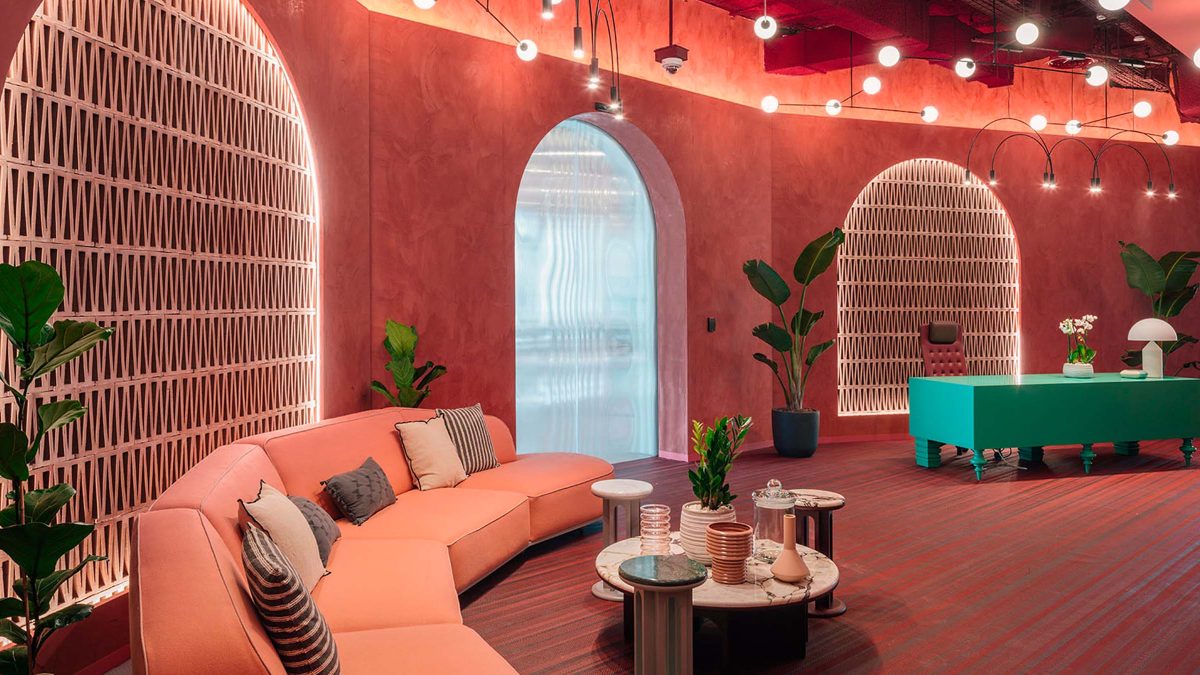
When designing for neuroaesthetics, we can rethink the concept of “form follows function.” Humans gravitate towards soft, curved shapes over sharp angles. Studies suggest that merely viewing an object’s curves triggers relief in our brains. Applying curves has been shown to impact how relaxed and happy people feel, whereas linear forms and angles can make people feel more uncomfortable and less relaxed.
Experimenting with asymmetrical designs to encourage ‘disruption’ may be helpful in areas such as innovation lounges or highly collaborative areas. However, symmetry and balance in environmental designs have been shown to have a more positive overall impact.
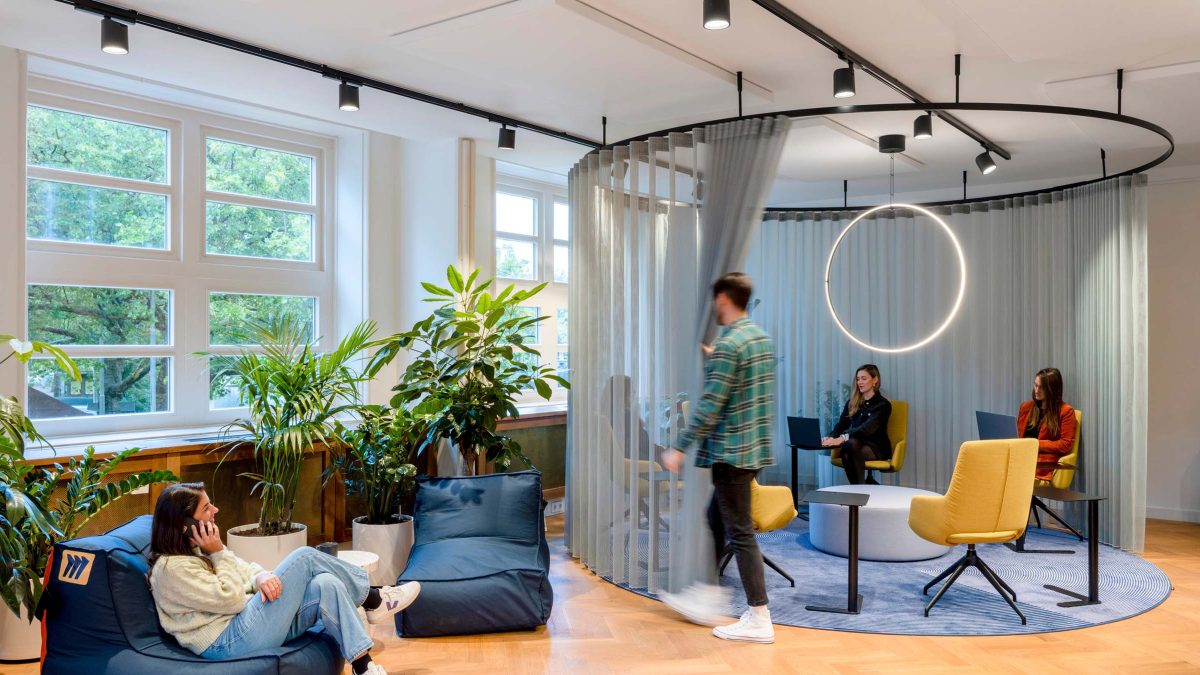
Raquel Machado, Associate Director, Design, adds: ‘By avoiding any hard physical barriers, we provide a sense of freedom and flexibility, enabling users to set up different environments as a way to get them out of their usual way of doing things.
As designers, we have plenty of tools at our fingertips that centre on the human experience of aesthetics, or ‘neuroaesthetics’. Unlocking the potential of these concepts can improve satisfaction and productivity while creating meaningful, inclusive environments that best support the people who inhabit them.
Our strategy and design teams collaborate closely with you to identify the desired behaviours for each space. By understanding and applying neuroaesthetics principles, we tailor environments that are not only visually appealing but also enhance well-being and productivity.
Associate Designer
Associate Director
Associate, Workplace Strategy